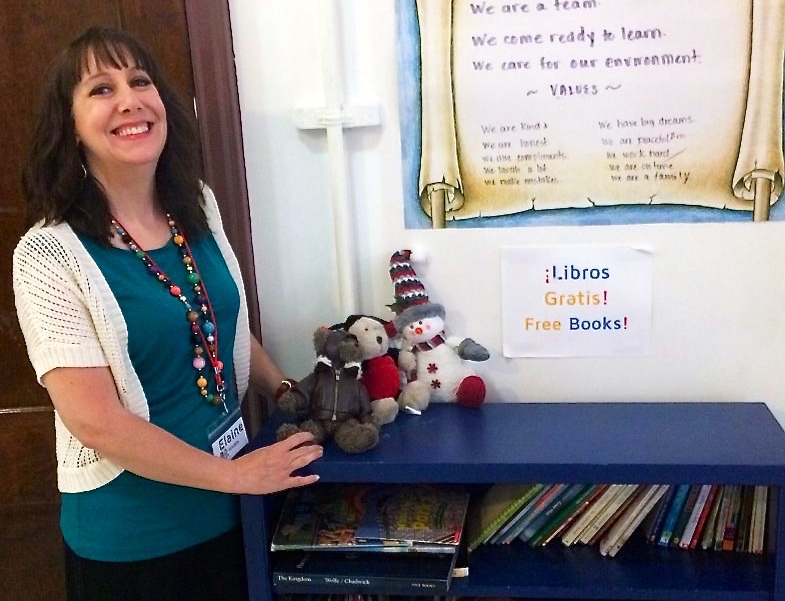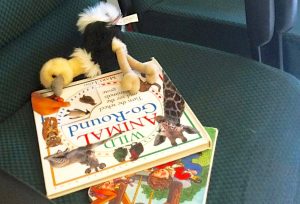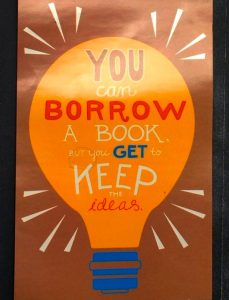By Thess Pfferr

Elaine Hinkle tends the Sacred Heart Center’s collection of free children’s books and toys. (Photo by Thess Pfferr)
Every child has a favorite toy.
Mine was a black plastic horse named Fury. He was the strongest and bravest horse I have seen in my life. Together we lived through adventures in hostile unexplored territories—under the kitchen table, or my mother’s office. Kids need toys, and not every kid has them.
In the hall of the Sacred Heart Center, there are five pine-green chairs where visitors sit and wait. A young woman sits in one of the chairs as a young boy and girl play around her. When the boy, who’s three, tries to open the center´s door, the woman stops him.

Invited by Hinkle to choose several free toys, a four-year-old girl from El Salvador picked an ostrich and two books. (Photo by Thess Pfferr)
“Not outside,” she says. “There are cars outside.” He smiles maliciously back at her while holding the door open. After a few seconds, the woman’s face is serious enough to make him surrender and he closes the door.
Elaine Hinkle, the development manager of the Sacred Heart Center, comes to them and says to the kids in Spanish, ¿Quieres llevarte un libro a la casa? ¿o un peluche? Do you want a book to take home? Or a stuffed animal?
The two kids look at Hinkle and then at the woman who’s with them. No answer. Son gratis, says Hinkle. They’re free. For the first time, the young girl looks up and smiles.
She is four years old, three feet tall and the only child of her mother, who’s 20. She was born in the United States shortly after her family arrived here from El Salvador.
Hinkle points at a box a few feet away that contains four stuffed animals next to a small book stand. The girl runs to the box, but the three-year-old boy sits next to his sister. “Some kids are shy,” Hinkle says.
The girl comes back with a stuffed animal and two children’s books, “Juan y Juanita” and “Wild Animals.” She hugs the stuffed animal. “What is it?” she asks her mother in Spanish, but her mother doesn’t know. She looks at me and repeats the question. “It’s an ostrich,” I say. She hugs the animal and smiles as if she had made a new friend.
After the rest of the family finish their meeting, they all leave the center. Hinkle talks about why she offers kids toys along with the books—to draw them out. “Sometimes they are shy,” she says. She comes to the kids in the center and says to them, ‘Oh! We got a pig! We got a bear! Do you like bears?’”
A little boy, four years old, came to her once after she had given him a book and a stuffed dog to take home. “He gave me 12 cents. He was so happy he had those things that he wanted to thank me. That’s what he had.”
The center usually has toys and books for younger children, but it also has books and magazines for older kids. A boy came in recently to browse the Center’s magazine collection, Hinkle says. The boy, who “must have been 12 or so,” was skinny and wore glasses. After a time he asked her, in English, whether the Center had any TIME magazines.
Hinkle was momentarily taken aback by the question.
Then: “I was like, good for you, kid!”
To read this dispatch in Spanish, click here/ Leálo en español aquí.

